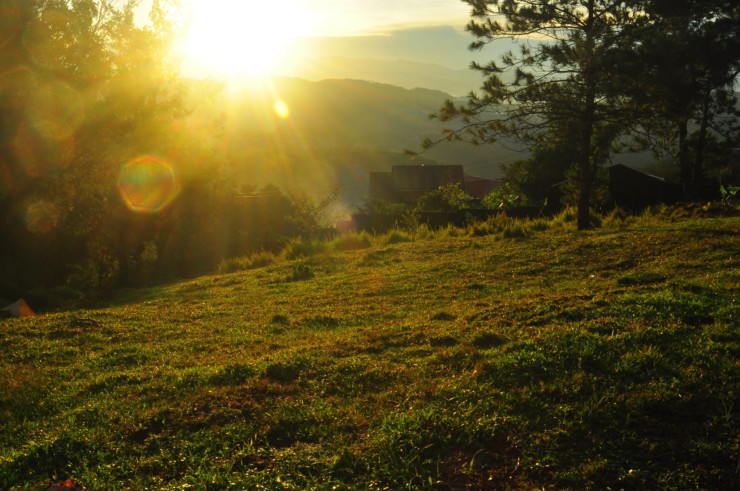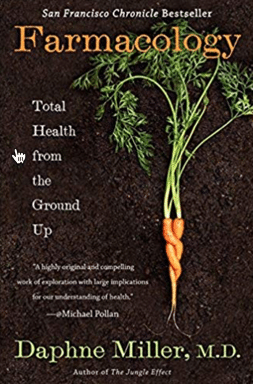Editor’s Note: Some of the best work Tweetspeak has to offer is regularly set aside as thanks to our Patrons, whose generosity helps us keep freshening the world with poems and stories.
Today, we’re starting our 10th birthday celebration by sharing this book club edition with you—an edition that ordinarily would have been for patrons only.
I grew up in a family of gardeners. Some of my earliest memories include plunging my fingers into loose soil to make holes for tiny seeds. As I got older, I was recruited to tame the weeds that grew alongside the plants. I didn’t like the way the hoe bumbled around in my too-small hands, or left blisters in my palms once I finally got the rhythm down. But I did love the juicy tomatoes and sweet corn. I loved the green beans I helped snap, cooked with bacon, and I loved the onions and cucumbers floating in vinegar water.
It only made sense then, when I got my first house with a yard, that I decided to plant a garden of my own. I still didn’t love hoeing weeds or dealing with pests, but I knew the fresh sliced tomatoes, long, crunchy carrots, and peppery Mesclun lettuce would be worth it.
Since my home’s septic system covered most of the back lawn, I decided to build two raised beds in the front. I bought untreated wood for the boxes, and dozens of bags of organic gardening mix, peat moss, manure, and perlite to fill them with. By the time I was ready to plant my first garden, the seeds and seedlings had a nutrient rich bed to rest in. And the plants that year were amazing. The tomato plants spilled over the tops of their cages, and zucchini leaves the size of bicycle tires wheeled out into the yard. But as the season continued, the vegetables weren’t nearly as impressive as the plants, and some, including my eggplant, barely produced at all. The next year, when I planted my second garden, the plants were mediocre at best.
The problem? Poor tilth. The store-bought soil and amendments were good for a season—or at least part of a season—but as soon as the nutrients were depleted, there was no natural system to restore it. As a single person who frequently ate out, my compost pile wasn’t producing quickly enough, and the dirt beneath my open-bottomed garden boxes was 60-year-old backfill trucked in when the neighborhood was built in the 1950s. It could barely grow grass. In fact, only one thing seemed to really thrive there: dandelions.
My first garden, and indeed my first yard, were a lot like the land of one of the farmers Daphne Miller talked with in her book, Farmacology. Erick Haakenson bought Jubilee Farm in 1989 after abandoning an academic career in philosophy. He knew the soil was depleted and that “nutrient-dense food could not come from nutrient-deficient soil.” So he began by testing the dirt for various vitamins and minerals, amending each plot based on the results. Over a few years, he added more than 50 tons of imported minerals, but with little success.
“Somehow it didn’t feel right,” Haakenson told Miller. “There were lots of minerals that I wasn’t sure where they were from. They were probably taken from developing countries, where their soil needed these minerals more than we do. I was also wondering, If these are all so good for my plants, why does the manufacturer recommend that I wear a mask when I’m spreading them?”
Miller compared the approach Haakenson had used unsuccessfully with his farm to a patient Miller treated in her medical practice. Allie came to Miller with chronic bloating, allergy symptoms, weight gain, and fatigue. She’d suffered no major injury or illness, and her symptoms didn’t start suddenly or even on a day she could remember. “Rather, as she explained it, ‘I probably had all this going on at a low grade for years.’” Like Jubilee Farm, Allie had been tested for various vitamin and mineral deficiencies, along with an exhaustive list of diseases and conditions. And though the tests had been inconclusive, she’d been taking various supplements that had offered no improvement.
For Jubilee Farms, the road back to good tilth was moving to biodynamic farming, where “each farm is a self-supporting eco-cycle, or self-powered organism.” Biodynamic farms don’t need outside fertilizers, pesticides, or even fuel because the farm itself generates everything it needs: “fertility is recycled back into the soil.” They do, however, need animals, who eat from the pastures of the farm, digest the contents with billions of intestinal bugs, or microbiota, and then “deposit” the digested, but enriched, material back onto the soil.
But what about Allie? According to Miller, her “tilth” also was restored when she entered the farm cycle more directly—not as purely as if she were part of a biodynamic farm, but also more directly connected to the soil that supports and is supported by the natural cycle of food. First, she invested in farm-fresh food through a shop that bought directly from farmers. She also joined a CSA (community supported agriculture) program that delivered a box of fresh vegetables to her neighborhood each week. She began eating a more diverse array of grains, fruits and vegetables, especially enjoying all the things that were in-season on the farms she was connected with. Then there was the matter of bugs, or those good microbiota that encouraged soil health. Miller encouraged Allie to eat more of the peelings and outer leaves of vegetables, not being too worried if a little dirt ended up in the salad or soup. And also, taking care not to kill the good bacteria in her gut through excessive use of supplements, acid blockers, antibiotics, or steroids. And finally, Allie began to volunteer at a school garden in her community.
Good tilth is important for land health and body health, but it’s also important, at least metaphorically, for writing health. In this case, we achieve good writing tilth when we have a natural cycle of consuming what inspires, educates, and motivates us and of digesting and producing what we imagine, experiment with, and create: poems, essays, and novels. Writers with good tilth take in a steady and diverse diet of books, artwork, and experiences. They take note of their everyday lives and are stimulated by interesting and even unexpected conversations. They keep an ongoing list of ideas, but they also make time to write—growing a healthy body of work that benefits from the creatively dynamic life they lead.
Write It Out
How’s your tilth? Using your land, your body, or your writing life (or maybe a combination of all three), freewrite about habits and results that reveal good or poor tilth. When you’ve finished, brainstorm ways to improve your tilth on all levels.
Feeling creative now? Craft a poem or a story opening that explores your land, body, or writing tilth—and share with us in the comments if you like.
Read With Us
This month, we’re reading Farmacology: Total Health from the Ground Up together. To take part in editions 2 and 3, become a patron, so you can access all the posts and discussions.
Photo by KC Alabanza, Creative Commons license via Flickr. Post by Charity Singleton Craig.
_______________________
What kind of writer are you? asks Charity Singleton Craig, as she opens you to a journey of discovery about the art of essay writing that explores both practical and reason-for-writing concerns.
- Grammar for a Full Life Book Club: On Becoming Less Possessive - June 16, 2021
- Grammar for a Full Life Book Club: Chilling Out on the Grammar Rules - June 9, 2021
- Grammar for a Full Life Book Club: A Passive Voice - June 2, 2021




L.L. Barkat says
Charity, thank you for this multi-level exploration of “tilth.” 🙂
I was especially fascinated by the part about Allie. This is the piece we tend to forget—our health depends on taking things as a whole rather than relying on cool-gadgety-feeling fixes. (In another farming article I perused today, about vertical farming, I was struck by the phrase “they’re trying to use the sun to replace the sun.” And it seems to me we do that a lot. Not necessarily a bad thing to love tech & gadgets & fixes, but we do seem to need more wisdom about how to integrate our discoveries and creations and place them into a systems context.)
Also, I had to go look at “tilth” a little more after reading your post, and I was fascinated by the issue of compaction (and how it ruins soil)—especially the issue of compaction in the sub-levels of soil, which is apparently harder to deal with. That makes sense to me.
It makes sense, too, when bringing that knowledge back to what you’ve explored with us here. And, what you’re asking us to explore in the writing prompt. Maybe “subsoil compaction” could be a cool new techie word for “writers block.” 🙂
Finally, I am curious about your personal journey with health and farming—will you be delving into that here at all? For myself, I can say that though this doesn’t quite qualify as a “farming and health” connection, I’ve been experimenting a little with grounding (being in contact with soil by just standing barefoot for a while outside while I weed), whenever my body feels particularly out of sorts. There’s such a sense of well-being to be had from this! (Can you imagine what it would be like to come to Dr. Laura? “Now, the first thing, Allie, is I want you to go barefoot outside a few times a week…” 🙂 )
Charity Singleton Craig says
Laura —
Thanks for all these comments. As a farmer’s daughter, and maybe even more a gardener’s daughter, I have always known to avoid walking and driving over land that’s being cultivated. On the other hand, what’s good for avoiding erosion is also good for avoiding compaction: keeping the land planted, even in cover crops on the years when nothing is being harvested. And that makes me wonder about your “subsoil compaction” analogy for writer’s block. What if the best way to avoid writer’s block may be to just keep sowing seeds of curiosity and creativity by reading and writing through what feels like a block? Even if those things we write, like cover crops, aren’t “the thing” we’re actually writing, or harvesting?
I haven’t addressed my own personal health struggles much in these posts because I have a complicated relationship with agriculture. Because I was diagnosed with stage-four cancer at such a young age (36), it’s made me wonder about the connection between my health and growing up on a “conventional” farm: Monoculture crops with high doses of pesticides. I also ate a *more than* standard American diet growing up because we raised cows and had neighbors who raised pigs. I ate beef or pork at most meals, and lots of potatoes, gravies, breads, and baked goods. I remember writing a blog post years ago about picking wild raspberries and making a pie, and only later did I realize that those berries (and most of the wild berries I ate growing up) had sprouted up next to a soybean field that had been sprayed that year and most years.
I don’t know how that contributed to my poor health, just as I can’t be absolutely sure how my own organic gardening, becoming a *mostly* vegan, shopping at farmers markets, and spending a lot of time myself barefoot in the backyard contributed to my recovery and subsequent good health. I believe strongly in how I live now, but it’s complicated to look back at my family’s way of life and place blame.
In week three, I talk about the value of gardening, and especially community gardening, and maybe that week, we can all decide to follow Dr. Laura’s advice for some time outside barefoot!
L.L. Barkat says
How did I not know you were a farmer’s daughter? 🙂
This year is a “fallow year” for me for reading (I’ve gone bookless, since Dec 18) and it is *reading* that often propels me towards writing. So I have to be patient and consider the value of the alternate “cover crops” in my life right now. We’ll see what I can say has come of it, when I start processing that more once I return to the book-covered life. (Now I just have to decide which book will have the great honor of welcoming my return. 🙂 )
I am actually really glad you brought up that word “blame,” because I think there’s a lot that hinges on it. On the one hand, laying blame in a strident way seems problematic on so many levels (and it is refreshing to have you not be a person who does that 🙂 ).
On the other hand, our shyness to lay blame (which is a good thing, all in all) can sometimes keep us from voicing what we’ve felt and observed, even suffered.
I do wonder if there’s something else we can do… ask questions, learn together, stand together on one side of the difficulties and consider how (together) we can work for a healthier scenario (this applies to so many arenas, I think, beyond the question of farming and health).
To this, thank you for sharing your experience here in the comments. It is my understanding that statistically there’s a farming/cancer correlation—farmers being at much higher risk for many types of cancers (including, for women, ovarian). As citizens, whether we eat organic or not (and whether we believe that affects our own personal health or not), I’m thinking that there’s maybe at least something we could find inside of ourselves that cares about the health of the people who spend their lives feeding us. Now that my own daughter volunteers at a sustainable farm, I do find myself more fascinated by this whole part of the equation—farming is a business, sure, but it’s also a gift to others. I know that this can be said of all kinds of work, but there’s something pretty special about the way farming works (and the way it helps us live, work, and play).
Again, thanks, Charity. I love talking to you about these things. You have a sensibility and history that are uniquely wonderful (even though that includes having truly and terribly suffered), to bring to the table for such a discussion.
Will Willingham says
When I had a house, I built a raised bed in the yard. I hadn’t had much luck (hadn’t tried very hard, actually) in a plot I’d started in the yard itself, so I tried out the raised bed. And I figured every year after the first amazing year that I’d have the problem you described, and envisioned having to dig out the soil and replace it every spring. But remarkably, it produced well year after year, and I don’t have a really good explanation, except for adding new top soil every other year. I didn’t know there was a word for this quality of the soil, but I love that it has a name (and that somehow it sustained itself for me).
I also like this idea of writing through a block. When I’m not writing, I don’t tend to think about it as writer’s block; I just don’t feel like I have anything wishing to be written. But there have been times when I have had writing commitments, and the writing seems not to wish to be written, and I’ve tried this, writing something else just to prime the pump. When I got a little stuck on a story I was writing, I wrote a letter from the main character to another personality from the story. It wasn’t meant to be, nor did it become, part of the story, but it did allow me to stir the soil around, so to speak, and sort of subconsciously poked in some seeds.
Charity Singleton Craig says
Will – The tilth of your raised bed must have been pretty solid from the start! I followed a “recipe” I found in a book, and I think it had too much peat to be very rich year after year.
I think your experience of writing around the actual piece you are working on sounds a lot like planting a cover crop during the off season. I think even doing non writing things can help our writing selves rest but keep a flow of ideas and inspiration coming. It happens for me when I exercise. It’s like my writing mind lies fallow for a time, but the farming work continues elsewhere. (Not to overuse the metaphor or anything! 🙂
Megan Willome says
You taught me a new word: tilth! But I totally get the idea.
I interviewed a chef last week who has two farm-to-table ventures. She talked a lot about the nutritional value of eating seasonally as well as eating sustainably. Inspirational!
Writing-wise, I need to be careful to do the deep tending of tilth, to not settle for something that yields a brief, subpar crop.
Charity Singleton Craig says
Your chef does sound inspirational. I talk to a lot of people in the food/farming industry for the writing I do for Edible Indy magazine. I think the things I learn from them have contributed greatly to my understanding and appreciation for the farm to table cycle. It brings a great deal of pleasure to me to sit down to a meal and realize I know, or at least have met, many of the people who grew the food I’m eating.
I think tending the tilth of our writing lives is so important. I think that’s why the writing life needs to include so much more than just writing … which, of course, it almost naturally does. But I know people who resist the idea of full-time writing for this very reason. Their other vocations are like an amendment for their writing soil; it’s how they maintain good tilth!